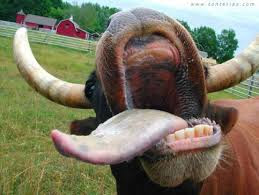miércoles, 31 de marzo de 2010
Time for Music
LISTEN AND THINK!
What is this song about? Has it got anything to do with a certain period of time, or is it timeless?
Which is the most difficult language?
domingo, 14 de marzo de 2010
Story 2: "Flash floods devastate Portuguese Island"
- Do the prelistening vocabulary
- Listen to the news trying to fill in the gaps.
- Answer the questions on the text in the space reserved for the comments on this post (in the blog not through the e-mail).
- Check your answers at the bottom of the page where you did the listening.
miércoles, 10 de marzo de 2010
Pronunciation

The past participle -ed suffix always causes trouble. The following are useful hints to learn how to pronounce it.
- /t/ with verbs ending in voiceless sounds other than t
- /d/ with verbs ending in voiced sounds other than d
- /id/ with verbs ending in t or d.
Practise your pronunciation: http://www.englishclub.com/pronunciation/-ed.htm
martes, 9 de marzo de 2010
Endangered Species

In Spring 2008, the polar bear was placed on the endangered species list. According to the Endangered Species Act, an endangered species is an animal that is likely to face extinction in its natural habitat. Polar bears have been categorized as a "threatened" species. The ESA defines a threatened species as one that is likely to become "endangered" in the foreseeable future.
The polar bear is the first animal that has been classified as endangered due primarily to global warming. Global warming is caused by carbon dioxide and other greenhouse gases that become trapped in the atmosphere. Heating homes, driving cars, and burning garbage all require fossil fuels that lead to global warming.
The polar bear's habitat is more vulnerable to global warming than many other species. Polar bears live mainly on the sea ice in the Arctic. This is where they hunt for fish and build up fat reserves. When the ice melts many polar bears move to land and live off their stored fat. In the Arctic, global warming is causing the ice to melt slightly earlier and form slightly later. This results in a shorter feeding season for the polar bear. Some risk their lives to find ice. If they have to swim too far they will drown from exhaustion and hunger. The World Wildlife Fund estimates that 25% of the Arctic sea ice has disappeared in the past 30 years.
It is not only the polar bear that is at risk in the Arctic. Every species of plant, animal, and insect there is threatened by global warming. Nevertheless, environmentalist groups such as the World Wildlife Fund often study large carnivores in order to assess the health of an ecosystem. The Arctic food chain relies on the polar bear. In addition, donations are more commonly offered for the protection of large animals such as bears or elephants. People in general are less interested in conservation efforts that protect small wildlife, such as plants or insects. However, by using donor money to protect the habitat of the larger animals (ex. reforestation programs), entire ecosystems can be protected.
It is important that animals such as the polar bear make it onto the endangered species list. Once they are on the list there are laws that protect these animals from being hunted for food or sport. Agencies also receive money and tools to protect the habitat and recover the species. The goal of removing the animal from the list is often achievable. Since the Endangered Species Act was introduced in the US in 1973, many species have been taken off the list due to increased populations. In fact, it is rare for a species to go extinct after they make the list. Sadly many species do go extinct while waiting for consideration.


